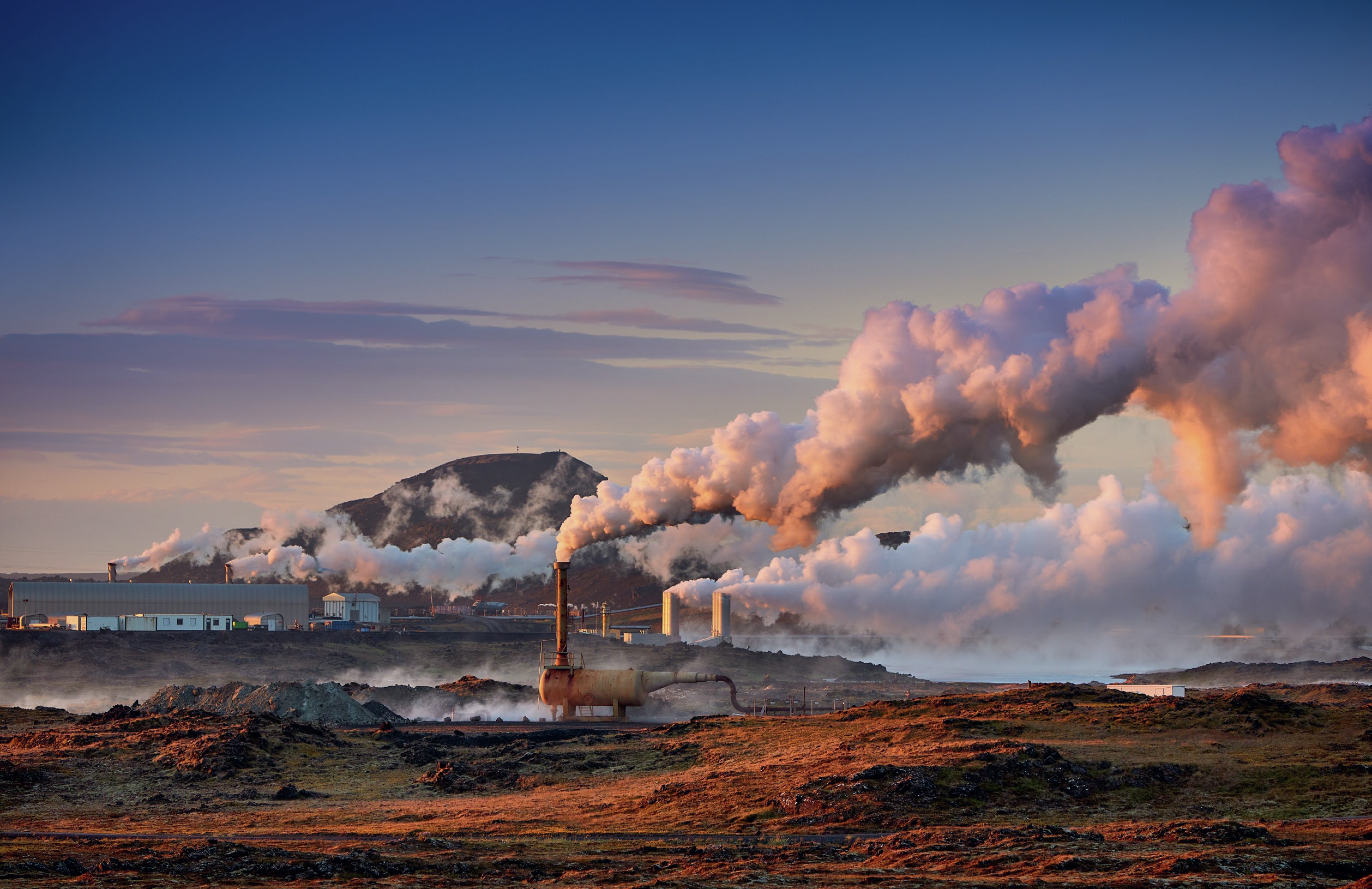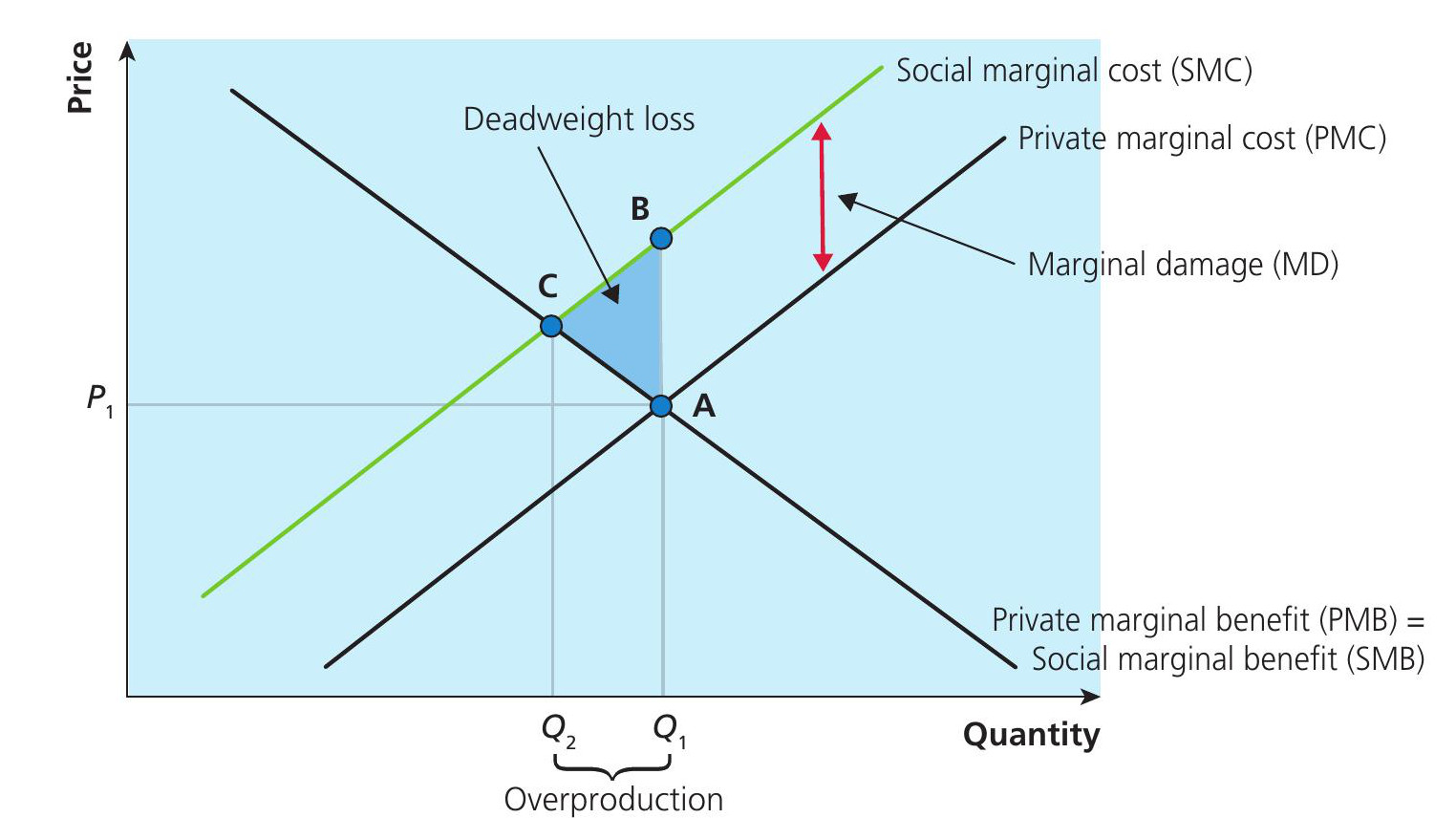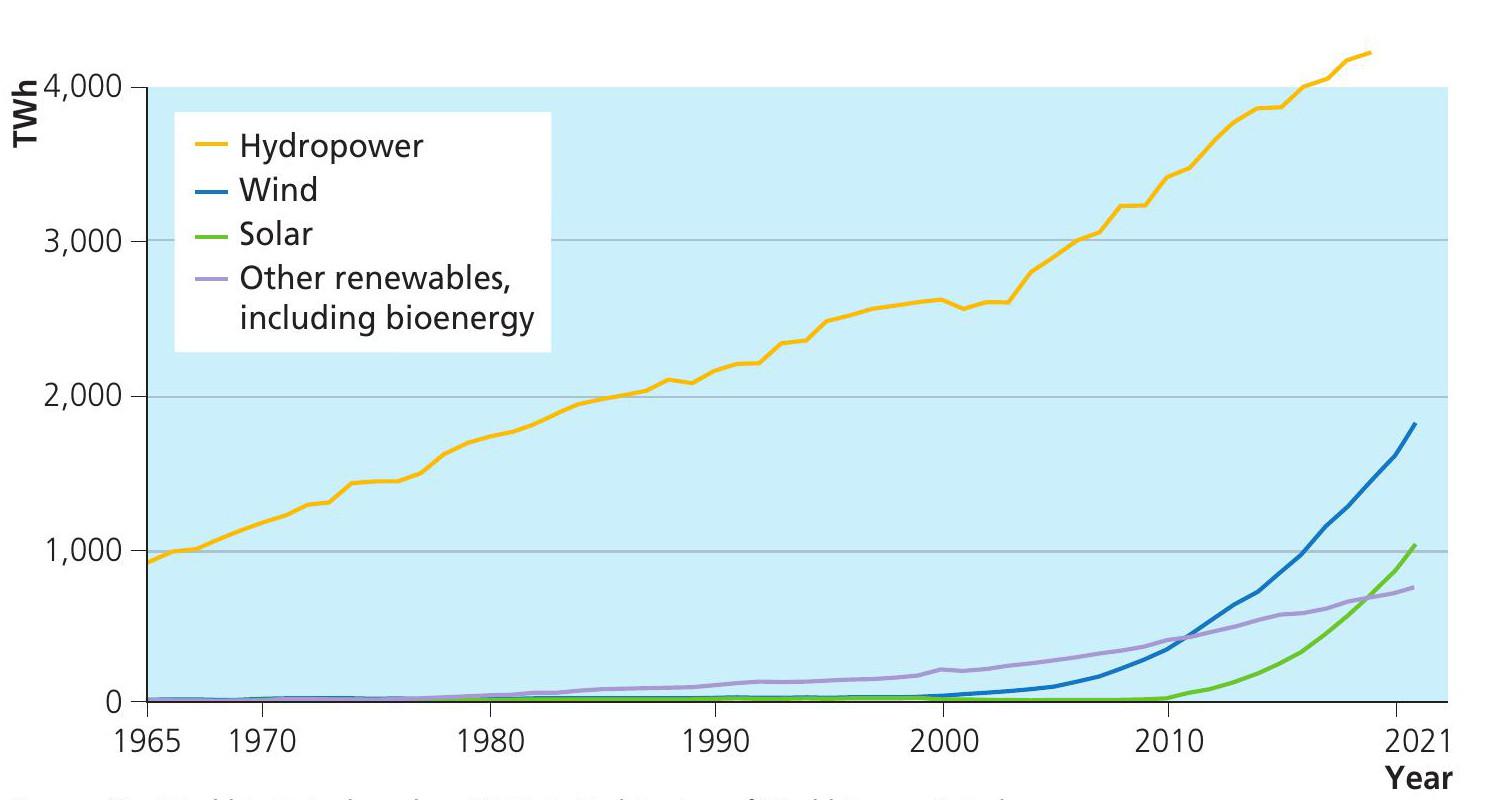Climate change and the use of renewable resources
One of the most important contemporary issues is climate change. It affects nearly every aspect of our lives, from living conditions to food sources, transport and future generations. Atisha Ghosh considers the economic implications of the drive towards renewables

SPECIFICATION LINKS
markets, externalities, public goods, deadweight loss, marginal benefits
Since climate change affects the whole world, it is important that there is a global collaborative effort to overcome the challenge. In November 2021, the COP26 meeting in Glasgow was the deadline for the 191 parties to the Paris Agreement of 2015 to present their plans to slash emissions over the coming decade.
The Economics of Climate Change (2007) is an influential report by Nicholas Stern and co-authors that has shaped the UK’s approach. It states that climate change is the biggest market failure the world has ever seen. One of the main reasons for climate change is the emission of greenhouse gases (GHGs). Such emissions cause negative externalities, both in production and consumption, affecting everyone around the globe, including individuals not yet born.
When there is a negative production externality, the social marginal cost is higher than the private marginal cost due to the marginal damage inflicted by such production (for example, emissions). This leads to overproduction and deadweight loss (see Figure 1).
Investing in renewable energy sources, preventing deforestation, reducing plastic usage and switching to sustainable transport (such as electric cars) are a few ways to tackle the overarching threats created by climate change. However, mitigation requires international cooperation, which is difficult to achieve with emission reductions being a (global) public good.

Net zero strategy
Under the Paris Agreement of 2015, countries agreed to reduce global warming to less than 2°C above pre-industrial levels. Many nations have set targets and made commitments to reduce carbon emissions. The UK’s Net Zero Strategy sets out how the government plans to reduce emissions and decarbonise all sectors such that a 100% reduction in carbon emissions is achieved by 2050. Other countries, including Japan, Korea, Canada and New Zealand have also passed laws committing to achieving ‘net zero’ by 2050. South Africa and Malawi have pledged to reach net zero by then, while Egypt has committed to 30–40% of its energy mix coming from renewable sources, such as solar and wind, by 2035.

Global cooperation
There has always been disagreement between national governments not only on policies to curb emissions, but also on who should bear the costs. A recent Oxfam report (Inequality Kills, 2022) states that although rich countries emit far more, they bear fewer consequences than poorer countries. At the same time, policymakers and climate campaigners in rich countries tend to adopt new technologies rapidly. In OECD countries, for example, coal is being replaced by wind, solar and gas-fired technology, supported by advanced grid technology for storing energy.
However, developing economies are still reliant on coal-fired power plants as they are cheaper and a relatively convenient way of meeting the demands of ever-rising populations. Without adequate climate action from richer countries, poorer nations face extreme weather, food and water shortages, as well as climate-driven migration.
For global emissions to decrease faster, the less endowed and more vulnerable countries need to be enabled to adopt renewable energy. Developed countries need to provide technical knowledge and financial support to enable poorer countries to embrace low-carbon technologies. The USA has pledged to increase climate finance to $5.7 billion by 2024. China, which has been the largest financier of overseas coal development, declared in the United Nations General Assembly that it would no longer fund such projects. At the COP26 summit, more than 40 countries committed to move away from coal usage, ending all investment in coal-generated power, both domestically and internationally. These signatories include major coal-using countries like Poland, Vietnam and Chile.
Individual countries would prefer others to take the lead on restricting carbon emissions. Although no one wants to witness catastrophic climate change, each country is waiting to see whether the others are taking any measures to combat the change, giving rise to free-riding concerns.
Given the non-excludability and non-rivalrous nature of climate change mitigation, even if one country decides to implement laws to restrict GHG emissions and undertakes the cost of mitigation, it cannot prevent another country from reaping the rewards of a safer environment. Thus, it is in the best interests of a particular country not to accrue any costs, but to enjoy the benefits of mitigation undertaken by other nations.
Decarbonisation
With the consequences of climate change becoming more evident, it is imperative that countries lower their dependency on fossil fuels and switch to low-carbon energy sources. This process is termed decarbonisation, and can be achieved by increasing reliance on renewable sources of energy — the combination of hydropower, solar, wind, geothermal, wave, tidal and modern biofuels. Globally, hydropower is the largest modern renewable source, but wind and solar power are both growing rapidly, as you can see in Figure 2.


Industries such as steel, cement, plastics, aviation and heavy-duty transport are hard-to-abate sectors. Hence, a plausible strategy is to decarbonise the easier sectors. The two basic policy approaches to decarbonisation are:
■ quantity regulation, i.e. setting quantitative limits on emissions via emissions trading schemes with realistic timelines to achieve them, or
■ taxing pollutants (carbon pricing) and subsidising greener alternatives
Decarbonisation of the power sector means reducing emissions per unit of electricity generated. According to the Intergovernmental Panel on Climate Change (IPCC) it is imperative that the power sector is fully decarbonised to fulfil the requirements of the Paris Agreement.
Renewable energy sources
Currently around one quarter of the world’s electricity comes from renewables. Figure 3 shows the relative importance of renewable energy in countries around the world.
Hydropower
This is the oldest and largest source of renewable energy. Hydroelectricity harnesses the power of water in motion to generate electricity. It is a highly reliable, safe and flexible source of energy.
Hydropower also helps in controlling f loods, provides irrigation support and clean drinking water. China is the leading producer of hydroelectric power in the world, followed by Brazil, the USA, Canada and India. The world’s largest hydroelectric plant in terms of installed capacity is Three Gorges (Sanxia) on China’s Yangtze River, which is 2.3 kilometres wide and 181 metres high. However, generating hydropower may be expensive and may also create potential for drought. New hydroelectric projects may result in the displacement of people living in low-lying areas.
Solar energy
This renewable, abundant and cheap form of energy is obtained by converting energy from the sun into power. Solar electric panels (photovoltaics) capture the sun’s energy to produce electricity. China is the world leader in producing solar energy followed by the USA, Japan, Germany and India. In Italy, the government encourages domestic solar production by providing a personal income tax deduction. The International Energy Agency estimates that in India, which currently has 42 solar parks, 31% of the country’s energy mix will come from solar energy by 2040. Countries like Egypt, Oman and Morocco are also making substantial progress in using solar energy.
Wind energy
Harnessing wind power using turbines is one of the fastest-growing renewable energy technologies. Wind energy does not generate waste or toxic substances, and contributes to sustainable development. In 2020, it produced more than 6% of global electricity. China, again, is the largest producer of wind power in the world.
Biofuels
Obtained from plant or animal waste, these can be liquid, solid or gaseous. The USA is the world leader in biofuel production (38% of total world biofuel production), followed by Brazil and Indonesia. However, the disadvantage of biofuels is that the manufacturing process can have detrimental effects on society, including emission of GHGs. Furthermore, farming land may need to be sacrificed to produced plant material to be converted into biofuel.
Geothermal energy
Energy derived from Earth’s crust, such as underground reservoirs of steam and hot water. The USA leads the world in geothermal energy production, and has the largest geothermal plant: the Geysers Geothermal Complex in California.
Energy storage: grids and big batteries
An important aspect of decarbonisation is for nations to ensure that adequate energy storage capacity exists. Developing such storage capacity, transitioning towards renewables, and using greener technologies entails substantial investment. The economic consequences may be particularly daunting for emerging economies.

Battery energy storage systems are devices that enable energy from renewables such as wind and solar to be stored and released when consumers need it the most. Lithium-ion batteries, used in mobile phones and electric cars, are currently the primary storage technology. China holds the largest battery energy storage market, with a cumulative installed capacity of 4.16 gigawatts (GW) in 2021.
The UK has the largest installed capacity of offshore wind in the world. The ability to capture this energy efficiently and deploy it when required entails investment in energy storage. In its aim to achieve net zero by 2050, the UK’s energy storage projects in operation, under construction and in the planning stages currently stand at 32.1 GW. The UK government’s Energy Security Strategy envisages that 95% of electricity generation will be low carbon by 2030.
With the increasing importance of energy storage in the transition to cleaner energy, technological advancements have resulted in different battery options. These batteries differ in their power and energy densities and can be used depending on whether large amounts of energy are required over a shorter period or small amounts of energy over a prolonged period. Further, with increased demand on grids, microgrids are being developed to serve specific areas. Such microgrids can be run independently, using renewable energy sources like solar panels, wind turbines and generators. Some even have electric vehicle charging stations.
Conclusion
Climate change affects every aspect of life, including the lives of generations to come. It is a challenge for the global community to recognise the scope of the problem and consequently to undertake mitigation action. Use of various tax and quantity regulations to reduce emissions, investing in more renewable sources of energy and developing technologies to store energy will help to tackle the problem. However, it is imperative that nations work together to achieve results, rather than focusing on individual interests alone.
KEY POINTS
1 Climate change is a global challenge that will require international cooperation. Countries may be tempted to freeride but international commitments, such as those agreed in Paris and Glasgow, help to ensure global buy-in.
2 Emissions are an example of a negative externality — the effects of the emissions are felt far beyond those who cause them.
3 As countries aim for net zero, sustainable transport, reforestation, reducing waste and plastics and increasing the use of renewable energy will be important.
4 Lower-income countries are more likely to suffer the consequences of climate change, so richer countries will need to help support their transition to net zero with funding and technology.
5 Limiting emissions, through emissions trading schemes, and taxing pollutants (carbon pricing) will be important to achieve net zero.
6 Countries are transitioning towards renewable energy (including hydro, solar, wind, biofuels and geothermal) but investment in storage capacity is essential if these are to replace fossil fuels.
Questions
1 What are the main threats of climate change?
2 Can the use of renewable energy resources help to create jobs?
Box 1 Useful terms
Market failure A problem that causes the market economy to deliver an outcome that does not maximise efficiency.
Externalities These arise whenever the actions of one party make another party worse or better off, while the first party neither bears the costs nor receives the benefits of doing so.
Negative production externalities When a firm’s production reduces the wellbeing of others who are not compensated by the firm.
Negative consumption externalities When an individual’s consumption reduces the wellbeing of others who are not compensated by the individual.
Public goods Goods for which the investment by any one individual benefits everyone in a larger group.
Non-excludability Individuals cannot deny each other the opportunity to consume a good.
Non-rivalrous One individual’s consumption of a good does not affect another’s opportunity to consume the good.
Free-riding When people can benefit from a good/service without paying for it.
Private marginal cost The direct cost to producers of producing an additional unit of a good.
Social marginal cost The private marginal cost to producers plus any costs associated with the production of the good that are imposed on others.
Private marginal benefit The direct benefit to consumers of consuming an additional unit of a good.
Social marginal benefit The private marginal benefit to consumers minus any costs associated with the consumption of the good that are imposed on others.
Marginal damage Additional damage caused by an additional unit of production or consumption.
Deadweight loss The reduction in social efficiency from preventing trades for which benefits exceed costs.





